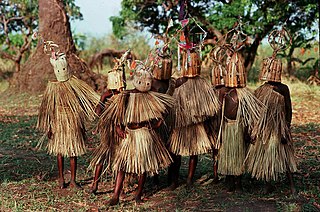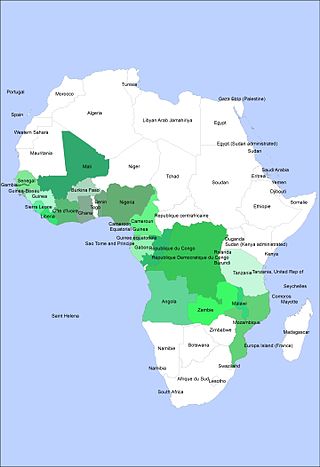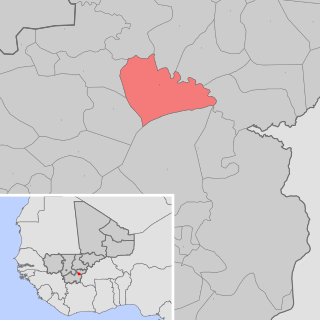
Mystery religions, mystery cults, sacred mysteries or simply mysteries, were religious schools of the Greco-Roman world for which participation was reserved to initiates (mystai). The main characterization of this religion is the secrecy associated with the particulars of the initiation and the ritual practice, which may not be revealed to outsiders. The most famous mysteries of Greco-Roman antiquity were the Eleusinian Mysteries, which predated the Greek Dark Ages. The mystery schools flourished in Late Antiquity; Emperor Julian, of the mid 4th century, is believed by some scholars to have been associated with various mystery cults—most notably the mithraists. Due to the secret nature of the school, and because the mystery religions of Late Antiquity were persecuted by the Christian Roman Empire from the 4th century, the details of these religious practices are derived from descriptions, imagery and cross-cultural studies. Much information on the Mysteries comes from Marcus Terentius Varro.

Initiation is a rite of passage marking entrance or acceptance into a group or society. It could also be a formal admission to adulthood in a community or one of its formal components. In an extended sense, it can also signify a transformation in which the initiate is 'reborn' into a new role. Examples of initiation ceremonies might include Christian baptism or confirmation, Jewish bar or bat mitzvah, acceptance into a fraternal organization, secret society or religious order, or graduation from school or recruit training. A person taking the initiation ceremony in traditional rites, such as those depicted in these pictures, is called an initiate.

A rite of passage is a ceremony or ritual of the passage which occurs when an individual leaves one group to enter another. It involves a significant change of status in society. In cultural anthropology the term is the Anglicisation of rite de passage, a French term innovated by the ethnographer Arnold van Gennep in his work Les rites de passage, The Rites of Passage. The term is now fully adopted into anthropology as well as into the literature and popular cultures of many modern languages.

The Dogon are an ethnic group indigenous to the central plateau region of Mali, in West Africa, south of the Niger bend, near the city of Bandiagara, and in Burkina Faso. The population numbers between 400,000 and 800,000. They speak the Dogon languages, which are considered to constitute an independent branch of the Niger–Congo language family, meaning that they are not closely related to any other languages.

The Bambara are a Mandé ethnic group native to much of West Africa, primarily southern Mali, Ghana, Guinea, Burkina Faso and Senegal. They have been associated with the historic Bambara Empire. Today, they make up the largest Mandé ethnic group in Mali, with 80% of the population speaking the Bambara language, regardless of ethnicity.

Djenné is a Songhai town and urban commune in the Inland Niger Delta region of central Mali. The town is the administrative centre of the Djenné Cercle, one of the eight subdivisions of the Mopti Region. The commune includes ten of the surrounding villages and in 2009 had a population of 32,944.
A jengu is a water spirit in the traditional beliefs of the Sawabantu groups of Cameroon, like the Duala, Bakweri, Malimba, Subu, Bakoko, Oroko people. Among the Bakweri, the term used is liengu. Miengu are similar to bisimbi in the Bakongo spirituality and Mami Wata. The Bakoko people use the term Bisima.

The Baga are a West African ethnic group who live in the southern swampy lands of Guinea Atlantic coastline. Traditionally animist through the pre-colonial times, they converted to Islam during the mid-eighteenth century under the influence of Muslim Mandé missionaries. Some continue to practice their traditional rituals.
The Bassari are an ethnic group who live primarily in Senegal, with some diaspora into Gambia, Guinea and Guinea-Bissau. They are a matrilineal society stratified into different co ed social groups by age. The Bassari speak a Tenda language called o-niyan. They are mainly subsistence farmers growing for self consumption, with fonio being a crop of large importance both to combat climate change and for cultural significance. The majority of the Bassari are animists, and the men take part in the Kore initiation society. Their art is mainly metallurgy, made for both cosmetic decoration and regalia with significance to the initiation society.

Traditional African masks play an important role in ceremonies, rituals, and masquerades across West, Central, and Southern Africa. Ceremonies in which masks are worn include harvest celebrations, funerals, rites of passage, weddings, and coronations. In some societies, masks and masquerades are also used to settle disputes and communal conflicts.
The Chamba are a significant ethnic group in the north eastern Nigeria. The Chamba are located between present day Nigeria and Cameroon. The closest Chamba neighbours are the Mumuye, the Jukun and Kutep people. In Cameroon, the successors of Leko and chamba speakers are divided into several states: Bali Nyonga, Bali Kumbat, Bali-Gham, Bali-Gangsin, and Bali-Gashu. They are two ethnic groups in Ghana and Togo also called Chamba, but they are ethnically distinct. The Chamba are identified through their own language, beliefs, culture, and art.
Zangasso is a small town and commune in the Cercle of Koutiala in the Sikasso Region of southern Mali. The commune covers an area of 452 square kilometers and includes 10 settlements. In the 2009 census it had a population of 19,925. The small town of Zangasso, the administrative centre (chef-lieu) of the commune, is 30 km southwest of Koutiala on the Route Nationale 11 that links Koutiala with Sikasso.
Doumanaba is a small town and rural commune in the Cercle of Sikasso in the Sikasso Region of southern Mali. The commune covers an area of 288 square kilometers and includes the town and seven villages. In the 2009 census it had a population of 15,105. The town of Doumanaba, the chef-lieu of the commune, is 49 km northwest of Sikasso.

Kouoro is a small town and rural commune in the Cercle of Kléla in the Sikasso Region of southern Mali. The commune covers an area of 472 square kilometers and includes the town and five villages. In the 2023 census it had a population of 23169. The town of Kouoro, the chef-lieu of the commune, is 80 km north of Sikasso, just off of the RN11, the main road linking Sikasso and Koutiala. It is also about 30 km west of the border with Burkina Faso.
Samatiguila is a town in northwestern Ivory Coast. It is a sub-prefecture of and the seat of Samatiguila Department in Kabadougou Region, Denguélé District. Samatiguila is also a commune. It is located approximately 15 km north of Kimbirila-Sud, and 40 km north of Odienné, the nearest main town and the capital of the Denguélé District. Samatiguila is well known among Ivorians for the large number of traders and bus companies that originate from the town but that operate all over Ivory Coast.

Tengréla is a town in the far north of Ivory Coast near the border with Mali. It is a sub-prefecture and the seat of Tengréla Department in Bagoué Region, Savanes District. Tengréla is also a commune.

Nyau is a secret society of the Chewa, an ethnic group of the Bantu peoples from Central and Southern Africa. The Nyau society consists of initiated members of the Chewa people, forming the cosmology or indigenous religion of the people. Initiations are separate for men and for women, with different knowledge learned and with different ritual roles in the society according to gender and seniority. Only initiates are considered to be mature and members of the Nyau.

The mysteries of Isis were religious initiation rites performed in the cult of the Egyptian goddess Isis in the Greco-Roman world. They were modeled on other mystery rites, particularly the Eleusinian mysteries in honor of the Greek goddesses Demeter and Persephone, and originated sometime between the third century BCE and the second century CE. Despite their mainly Hellenistic origins, the mysteries alluded to beliefs from ancient Egyptian religion, in which the worship of Isis arose, and may have incorporated aspects of Egyptian ritual. Although Isis was worshipped across the Greco-Roman world, the mystery rites are only known to have been practiced in a few regions. In areas where they were practiced, they served to strengthen devotees' commitment to the Isis cult, although they were not required to worship her exclusively, and devotees may have risen in the cult's hierarchy by undergoing initiation. The rites may also have been thought to guarantee that the initiate's soul, with the goddess's help, would continue after death into a blissful afterlife.

N'tomo masks are used by the Bambara people of West Africa. There are six male initiation societies that young males must pass through before becoming a man. N'tomo Dyo is the first of these through which boys pass before their circumcision. The mask represents the legendary ancestor of the Bambara and it is a symbol of protection.

The Binou is a Dogon totemic, religious order and secret ceremonial practice which venerates the immortal ancestors. It can also mean a water serpent or protector of a family or clan in Dogon. It is one of the four tenets of Dogon religion—an African spirituality among the Dogon people of Mali. Although the Dogons' "Society of the Masks" is more well known, due in part to Dogon mask–dance culture which attracts huge tourism, it is only one aspect of Dogon religion, which apart from the worship of the Creator God Amma, a rather distant and abstract deity in the Dogon world-view, is above all made up of ancestor veneration. The Binou serves as one of the four aspects of Dogon religion's ancestor veneration. Other than the Binou and the worship of Amma, the other three aspects of the religion includes the veneration of Lebe, which pertains to an immortal ancestor (Lebe) who suffered a temporary death in Dogon primordial time but was resurrected by the Nommo; the veneration of souls; and lastly, the Society of the Masks, which relates to dead ancestors in general. These myths are in oral form—known to us in a secret language. They form the framework of Dogon's religious knowledge, and are the fixed Dogon's sources relating to the creation of the universe; the invention of fire, speech and culture.














